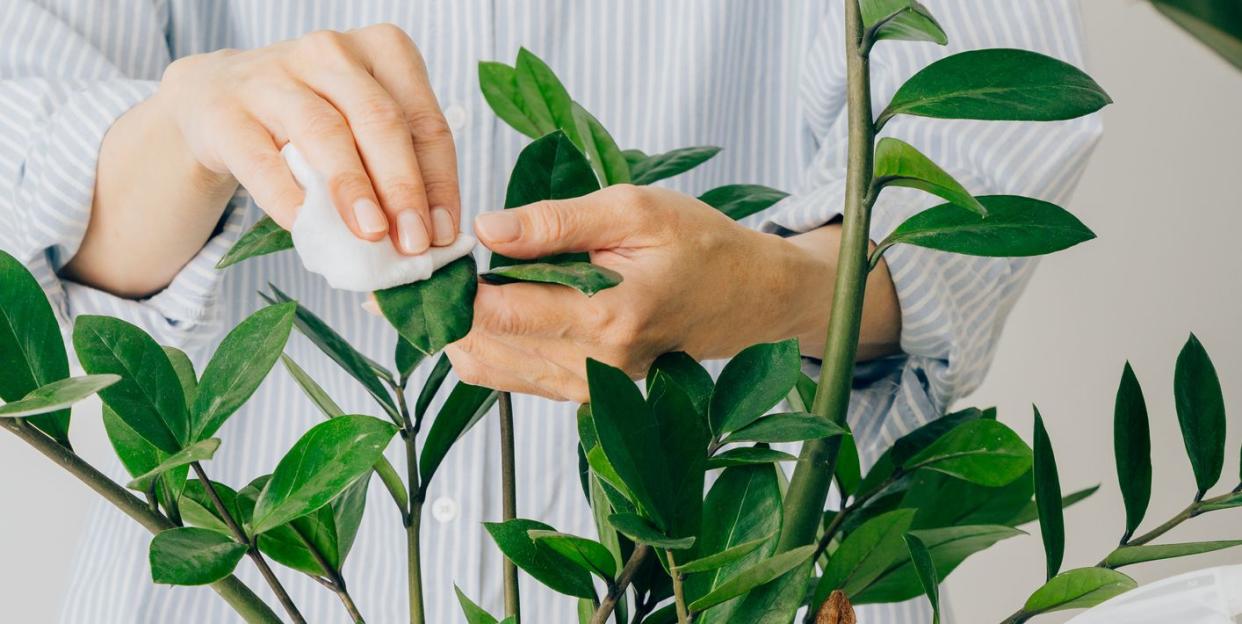This Designer-Favorite Houseplant Can Go Weeks Without Water

Zamioculcas zamiifolia, or the ZZ plant for short, has interior designers and plant enthusiasts alike sold on its good looks and roll-with-it personality. The perennial houseplant native to Eastern Africa looks beautiful in any room with the glossy oval leaves that zigzag up its tall, graceful stems. It can also thrive in any of them thanks to its forgiving nature. It truly needs very little water and can tolerate even dim light, so you can set it and forget about it (for at least a few weeks). That makes it a great introductory houseplant for those looking to green up their thumb too.
Beauty and hardiness are just two of the lovely ZZ plant's benefits. It's also thought to help purify the air since it's related to philodendrons and peace lilies, two of several common houseplants that can remove volatile organic compounds like benzene (a by-product of gas stoves) from indoor air through their root systems, according to a landmark NASA study. You may need several big plants in a small space to get the full effect, but a little extra oxygen and a splash of green certainly help.
Parents, take note: A ZZ plant can be toxic to humans, dogs, and cats. It's okay to touch a ZZ plant, but the sap can cause contact dermatitis so just wash your hands afterward. It also shouldn't be chewed or eaten. It's not fatal (or even on the ASPCA's list of toxic plants), but it can cause swelling and discomfort. Place your plant on an inaccessible shelf or tabletop to keep it well out of reach.
Ahead, we outline what you need to know about the ZZ plant and the environmental factors it loves. We also share a few of our favorite sources to buy one and start your collection.
How to Care for a ZZ Plant
These hardy, low-maintenance plants don't need much to slowly grow into beautiful decorations for any room in your house. Just don't overwater them!
Light
Place a ZZ plant in bright, indirect light. If your windows face south, east, or west, avoid placing the plant in direct sun because the leaves can easily burn or scorch. In north-facing homes, you can put it almost anywhere.
Water
ZZ plants are drought tolerant, which means that they store water. It also means that you should water it only every few weeks, or less in darker, colder climates. Overwatering is a common problem with ZZ plants, so be sure the soil is completely dried out before you water it again.
Soil
As long as the soil has drains well, you can use almost any high-quality potting mix for a ZZ plant. Some care guides recommend mixing a portion of succulent soil in for better drainage. Just be sure your pot has a hole in the bottom; if it doesn't, fill the bottom with drainage rocks before you add the soil. That helps ensure the roots won't drown or get waterlogged and potentially rot.
Humidity and Temperature
Despite their drought-tolerant nature, ZZ plants actually grow best around room temperature or 70 degrees. If you live somewhere with cold, dry winters, move your plant near a humidifier for the season.
When to Repot a ZZ Plant
If you notice your ZZ plant hasn't grown much lately or has started to droop for seemingly no reason, check the roots. You can tell it needs to be repotted to a larger container if the roots look like they're twisting around each other and you can see more roots than soil around the outside.
You Might Also Like

